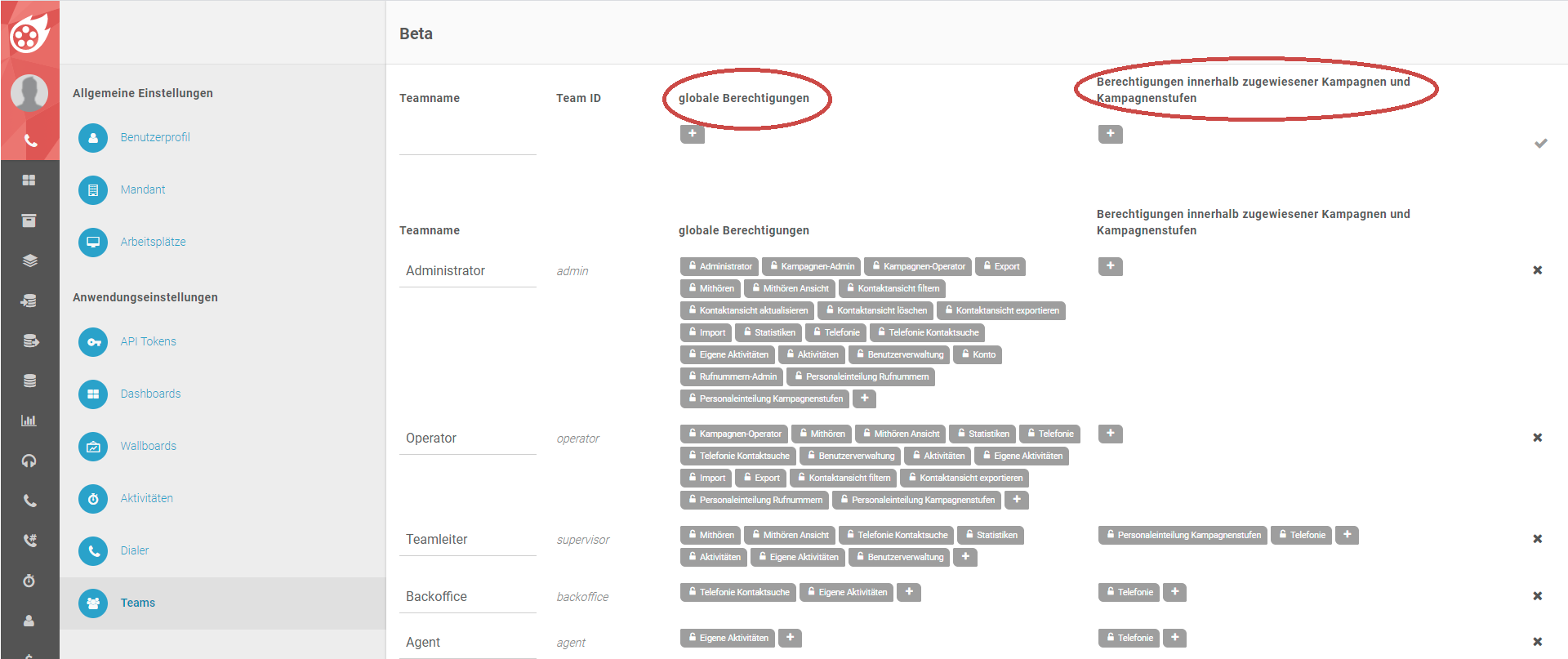Dialfires rights system
A clear distribution of roles is not only useful in the theatre. Keep control of your teams and their system permissions with Dialfire.

In Dialfire, there is a user role distribution ー this has always been the case, but is now a bit more flexible and versatile. The following five fixed roles (teams) are preset in Dialfire:
agent
Agents are your phone operators.
supervisor
The supervisor provides guidance and manages the team.
backoffice
The back office is also performed by agents. However, these agents have significantly more data access (e.g. customer search), deal with special cases (e.g. quality management) and not with active telephony.
operator
The operator is responsible for data handling, i.e. import and export within a campaign. Attention: he is not a telephonist!
admin
Campaigns and processes are defined and set up by admin.
For each role, i.e. each team you create, you can define both global and restricted permissions.

Global permissions apply everywhere and to all campaigns. Restricted permissions allow you to grant access to each campaign individually. They only affect the campaigns to which you have assigned the team.
Make a plan
Each team has specific permissions in the system. These permissions can be edited and new teams can be created. We will discuss whether this makes sense for you with some examples. Basically, if you are satisfied with the rights distribution of your users and employees in Dialfire, everything can stay as it is.
If the given roles are not quite right for you yet, make them fit. There are various approaches that ー depending on the company and project structure ー may make sense for you.
Strategy 1
The simplest way of distributing rights is to assign each employee to a team. This team corresponds to his function in the company and is like his job title on his business card. So there are fixed teams with fixed permissions, which corresponds to the old familiar Dialfire rights system.
Strategy 2
However, if the roles are to be distributed in a more fine-grained way, a task-related distribution of rights is recommended. A team is designated according to the roles that the employees assigned to it take on. Thus, each employee is assigned to several teams and can assume several functions.
Strategy 3
For large companies, the division into project teams makes sense. A project for the campaigns of a particular client is bundled in a team and includes its own functions.
If the projects are differentiated by client and three functions (admin, supervisor, operator) are defined for each project, there are, for example, 15 teams for five clients (admin project 1, supervisor project 1, operator project 1, admin project 2, etc.).
Each team is assigned limited rights, which then grant access to the respective campaign. If administrators of one team should not be able to access data of the second team, they can now be easily and cleanly separated from each other even within one client.
Strategy 4
For smaller companies it is recommended to create one team per administrator. This makes it easy to maintain an overview and saves a management level.

Whatever strategy is right for you, it must be well thought out and even better prepared. We are happy to help you with this.
Happy Teambuilding!